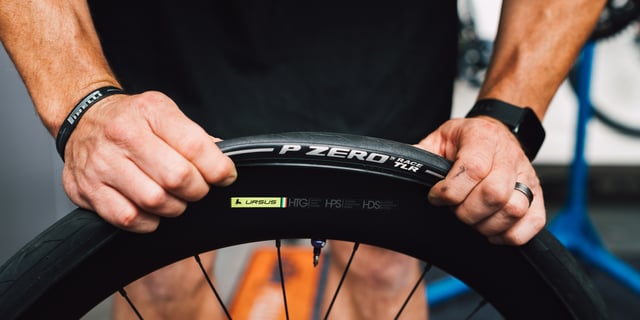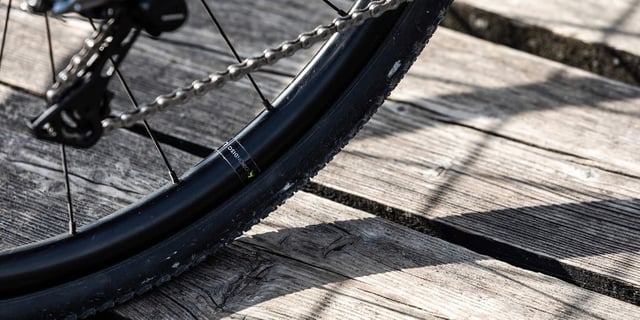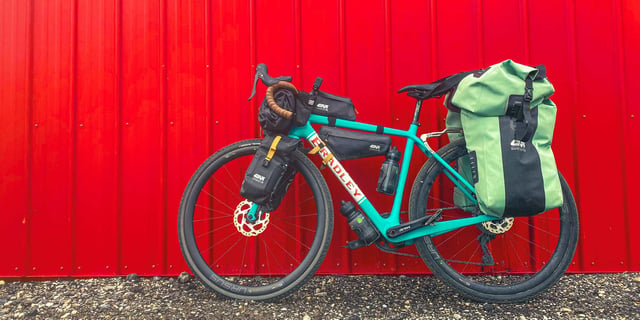
During its cycle of use, each set of carbon wheels is subjected to millions of continuous stresses. How do we ensure that the products we place on the market respect the strictest safety regulations? How do we verify their reliability? The answer is found in our in-house quality testing, which aims at simulating the maximum stresses on Ursus wheels. Find out with us the methods and results of this real “trial by fire”!
Quality, our passion
For Ursus, quality is an essential characteristic. Each product is first designed and then manufactured researching and using the highest quality standards, duly certified by the main international ISO standards.
How do we make sure that this continues to be implemented? What are the most important steps which allow us to guarantee the supply of mechanical components for safe and durable cycling? Surely, one of these concerns the cycle of tests which are conducted in the Ursus facility in Rosà (Vicenza). Our in-house tests aim at stressing components in order to evaluate their durability and their resistance to wear.
We want to ensure the introduction into the marketplace is that of the highest quality wheels and components, which is why we use these tests with the objective of achieving extremely high and conclusive standards. We are proud to assert with certainty that Ursus standards are much higher than the international standards required by the current market.
Ursus tests: two distinct phases of qualitative verification
The tests we will cover are implemented in two separate steps. The first verification begins in the design phase of the new products: all prototypes designed are subjected to strict resistance tests. Only once these tests have been passed, the prototype can begin to evolve until it becomes a product ready for mass production and the following commercialization of the incredible product.
Following their introduction into the market, all Ursus products continue to be tested. Each single model, in fact, undergoes sample technical tests used during the production phase.
What kind of quality tests do we perform on Ursus wheels
1. Rim-Rolling Test
A typical example of an in-house test utilized on our rims? Here’s one: this test requires a wheel to rotate continuously for a full 360 hours. During this time span, the wheel undergoes a continuous series of mechanical distresses against two 10 mm steps. The structural verification generates a total of 8 million impacts, endured with a load of 95 kg. Keep in mind that the standard required by the international standard ISO 4210-5 requires only 1 million impacts endured with a load of 70 kg. Therefore, we can safely guarantee that all of Ursus wheels are 8 times more resistant to impacts than required by the strict regulations required by the market.
2. Rolling + Oscillation
A further test is performed in a second phase to complete the previous test. This test adds to the rotation of the wheel the swing from the right and the left. Even during these movements, a series of impacts is applied by two 10mm steps, with a load of 95 kg. The test is carried out without interruption for 180 hours: the total integrity of the wheel at the end of the test certifies its passing.
3. Static bending test
On all our complete wheels, we also test the lateral stiffness, also called static bending. To perform this test, the bending of the rim is checked by applying a load of 35 kg. Basically, the wheel is placed on a flat surface, then a load cell is hooked onto one of the two rim’s sides. The test provides that the load, initially that of 35 kg, remains attached to the rim for more than 1 minute. After that, the load is reduced to 25 kg and the test is repeated for an additional minute. The test is concluded by removing the load from the rim and checking that the lateral bending suffered by the rim has not exceeded even one millimeter. This test serves to ascertain that the wheel is rigid enough to not flex during its normal use.
4. Rim heat resistance test – Braking test
A specific test is carried out on all carbon fiber wheels to verify that the rim’s structure (intended as carbon fiber frame and applied resin finish) is adequate to withstand the high temperatures reached during the braking phase.
During the test, the wheel is fastened to a mechanical arm and rotated at 90 km/hour. Then, a strong force is applied to the brake lever: this load must have a result high enough to allow us to obtain a constantly increasing braking force (a step of 20N), which goes from an initial value of 20N to a final value of 180N. At each increase of the force applied, 3 tests are performed in 1-minute intervals. The next level of braking force is reached, and the test is repeated.
This test is carried out both in dry and wet conditions, allowing us to understand the real braking values of Ursus wheels under all conditions of use. Here is a small comparison between the data required by the ISO 4210 standard and the final results of this test on Ursus rims.
| Tyre system | Braking force requested by ISO 4210 | Final result on Ursus rims |
|---|---|---|
| TUBULAR in DRY condition | 425 N | 744 N |
| TUBULAR in WET condition | 220 N | 500 N |
| CLINCHER in DRY condition | 425 N | 676 N |
| CLINCHER in WET condition | 220 N | 472 N |
5. Test UCI – Impact Test
Ursus wheels are used every year by the best professional cyclists to travel thousands of kilometers and to participate in the toughest races. The relationship with pro-teams such as Bardiani – CSF, Neri Sottioli – Selle Italia – Ktm and Torpado – Ursus is in itself a path of excellence for Ursus, which brings to the conclusion that constant improvement of the reliability and performance of our products is very important to Ursus. What we describe below is a further test which is performed on each and every wheel model with a rim of at least 24 mm. The test is performed both as an additional confirmation of the rims endurance and for certifying its suitability for use in all competitive races.
This test essentially consists of a type of a crash test. In fact, a weight of 10 kg is dropped over the wheel (on which the tire is not mounted). The test result is considered positive if the wheel does not present any deformation or lateral tilting greater than 1 mm. You can check which wheels are suitable for you, as all the models which pass this test are listed on the official UCI website.
Ursus products currently approved by UCI are:
-
Miura T37
-
Miura TS37
-
Miura C37
-
Miura C50
-
Miura TS87
-
Miura TS37 Evo Disc
-
Miura TS47 Evo Disc
-
Miura C58
-
Miura T45
-
Miura TS58
-
Miura TS90
-
Miura CB38
-
Miura T47
-
Miura TS47
The collaboration with Professional Teams, given the extreme use to which the product is subjected, not only drives Ursus increase the reliability on a performance level, but also to improve aspects related to the practicality of use, for example facilitating the wheel replacement in a shorter time period rather than facilitating the mode of transport.



